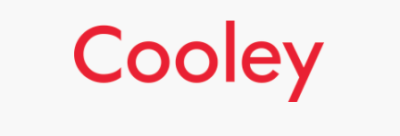Creating an ethics and compliance program that reaches and maintains peak effectiveness—and supports a strong corporate culture—takes tremendous effort and an unwavering commitment to continuous improvement. In this post, we explore nine key strategies E&C professionals can use to ensure that their programs are meeting their goals—and staying ahead of the curve.
1. Supercharge Your Ethics & Compliance Program Effectiveness
To stay ahead of the curve, compliance professionals need to clearly define program effectiveness and commit to using industry-leading best practices to achieve peak effectives. To do so, E&C pros must know:
- How to leverage the E&C “program effectiveness cycle”
- Best practice approaches for implementing, maintaining and improving core E&C program elements
- Specific ways corporate culture can make or break a program, and keys to supporting a healthy culture
2. Inspire Ethical Behavior with a Fresh, Innovative Approach To Your Code of Conduct
A code of conduct is the foundational document of every company’s ethics and compliance program—and one of the first pieces of information an employee reads. Because the code is a vital policy, true leaders make a commitment to regularly use fresh, innovative approaches to inspire employees to meet its standards. Getting the most out of your code requires:
- Learning the key steps to assess and build (or re-build) a code to ensure it is working hard for your organization
- Reviewing examples of cutting-edge codes and incorporating best practice elements
- Understanding the opportunities presented by interactive digital codes, and how they can connect with and support other elements of your E&C program
3. Engage Your Board With a Compelling Reporting Strategy
A well-executed board reporting strategy helps ethics and compliance programs gain credibility and visibility while increasing board support and engagement. As part of your engagement strategy, make sure to use:
- Criteria to benchmark your current board reporting protocol against best practices
- Memorable and effective board reports
- Sample content and metrics from leading reports
4. Leverage Your E&C “Big Data” to Make it Actionable
Big data is now part and parcel of ethics and compliance. Each component of your program likely brings in elements of data to your door, but understanding how you can use this data to actually improve your E&C program is essential. Making your big data actionable entails:
- Ensuring that you are getting the right key metrics from your training, policy management and hotline/case management efforts
- Focusing on and interpreting only the most meaningful data
- Leveraging your data to make real program improvements—and preparing for more advanced data collection and measurement in the future
5. Get Ahead of the Curve in the E.U.
Global ethics and compliance trends are having a big impact on organizations that do business in the E.U. Ethics and compliance professionals across the E.U. are faced with the challenges of navigating the complex maze of different laws and regulations, as well as the vast and inherent cultural differences across countries. To ensure your E&C programs flourish in the E.U., you need to be aware of how to:
- Maintain program momentum
- Deepen and mature your program
- Ensure your program stays ahead of the curve
6. Navigate the Complex Challenges of Cross-Border Investigations
Investigating whistleblower allegations can be challenging enough. But when the allegations involve witnesses and documents around the globe, the complexity multiplies exponentially. To avoid investigation nightmares, E&C pros need to know how to:
- Recognize and mitigate the risks of cross-border investigations
- Identify and appropriately address cross-cultural factors that can come into play
- Address the wide range of issues that come up in global-scale investigations, including local data protection laws, laws relating to evidence-gathering, witness interviews and more
7. Get Up to Speed on E&C-Related Cybersecurity Risks
Until recently, cybersecurity has been a siloed risk in IT. But, with the vast majority of cybersecurity breaches related to human error, it is essential to address root causes through all facets of an E&C program—especially policies and training. Elements to map out include:
- Cybersecurity’s relationship with your ethics and compliance program
- How to work with IT and other key departments across your organization to protect your business from cybersecurity threats
- Best practices for mitigating cybersecurity risk—and ensure board-level attention and action around this issue
8. Build a Strong, Defensible Third Party Risk Management Program
As regulatory scrutiny and high-profile cases increase, compliance professionals need to be asking more questions than ever about effective management of third party risks. In order for you to stay ahead of these trends, you need to understand:
- The difference between a third party risk management approach that withstands regulatory scrutiny—and one that does not
- Best-practice guidelines for auditing third parties
- Industry-leading frameworks to use to assess your third-party corruption risk
9. Stay Ahead of Emerging Workplace Behavior Risks
Cultural and socioeconomic trends impact workplace behavior—and behavioral risk. Skyrocketing social media use, changing recreational drug laws, use of personal mobile devices and a multitude of other security and privacy threats are forcing organizations to stay on top of their evolving risk profile. To stay ahead of the curve, and your employees, make sure you know:
- How to write and manage policies that mitigate organizational risk within a rapidly changing legal landscape
- How to successfully navigating differences in state and federal regulations
- Fresh approaches for training employees on appropriate workplace behavior, and strengthening a culture of compliance






